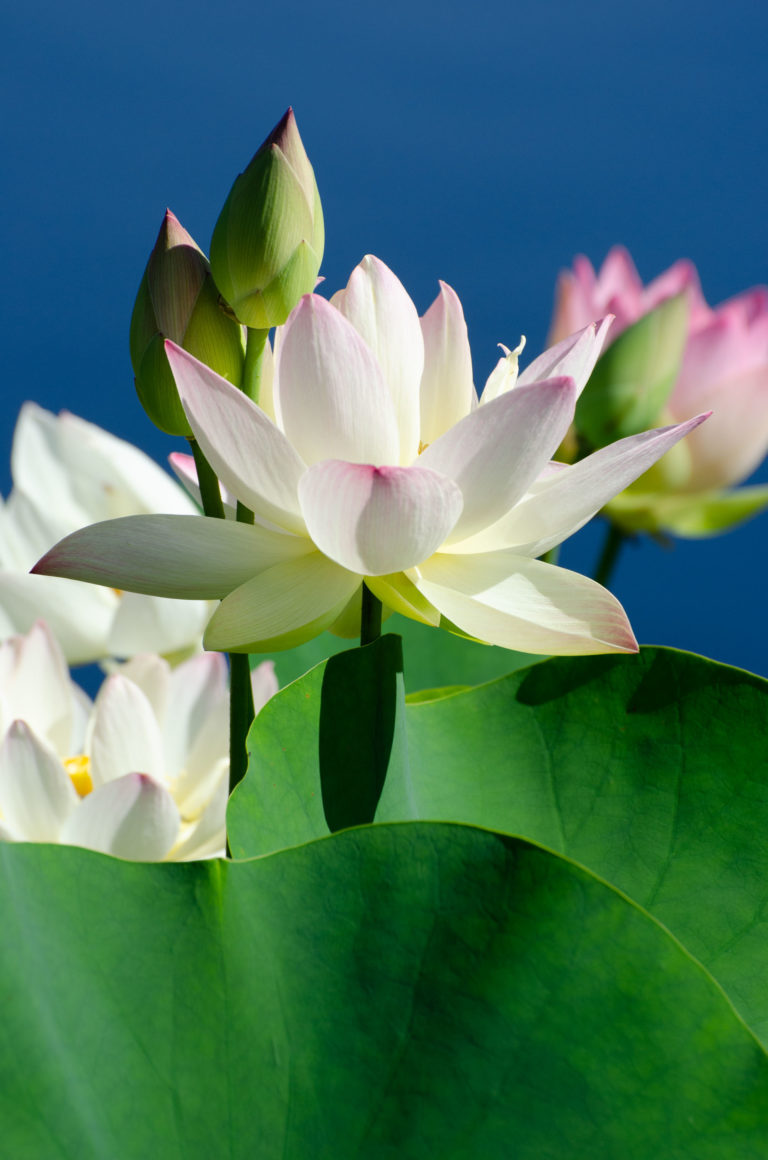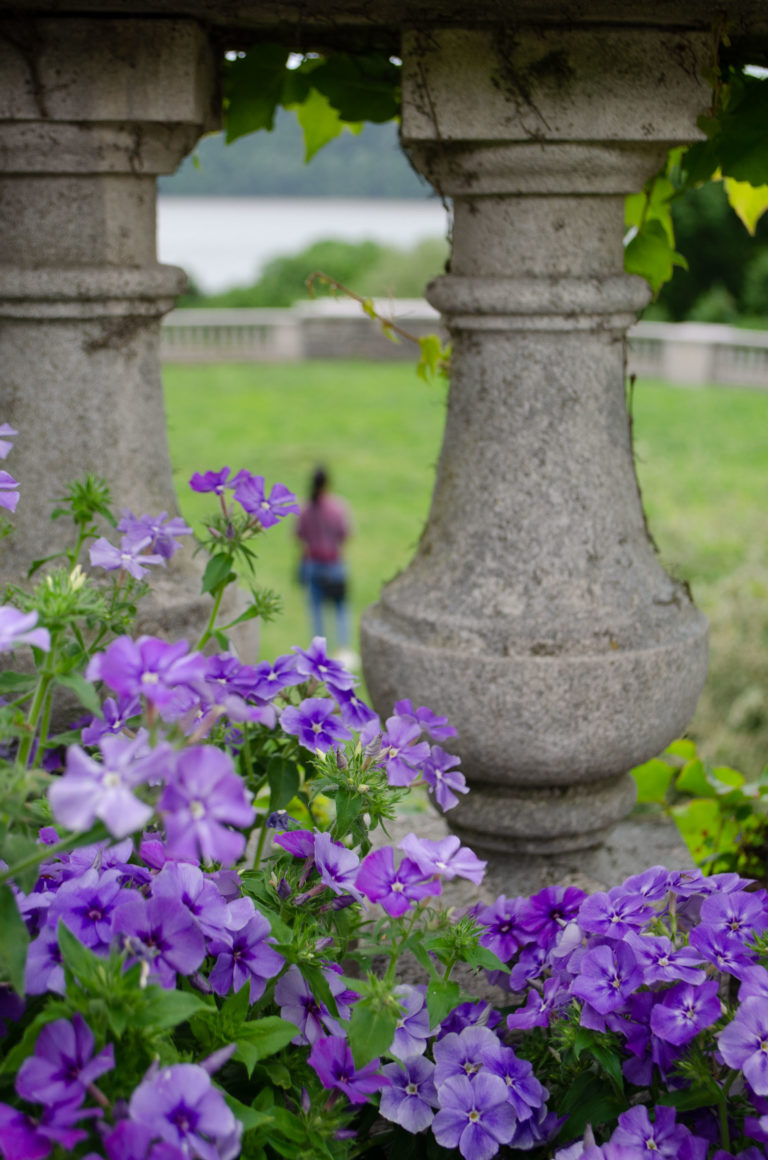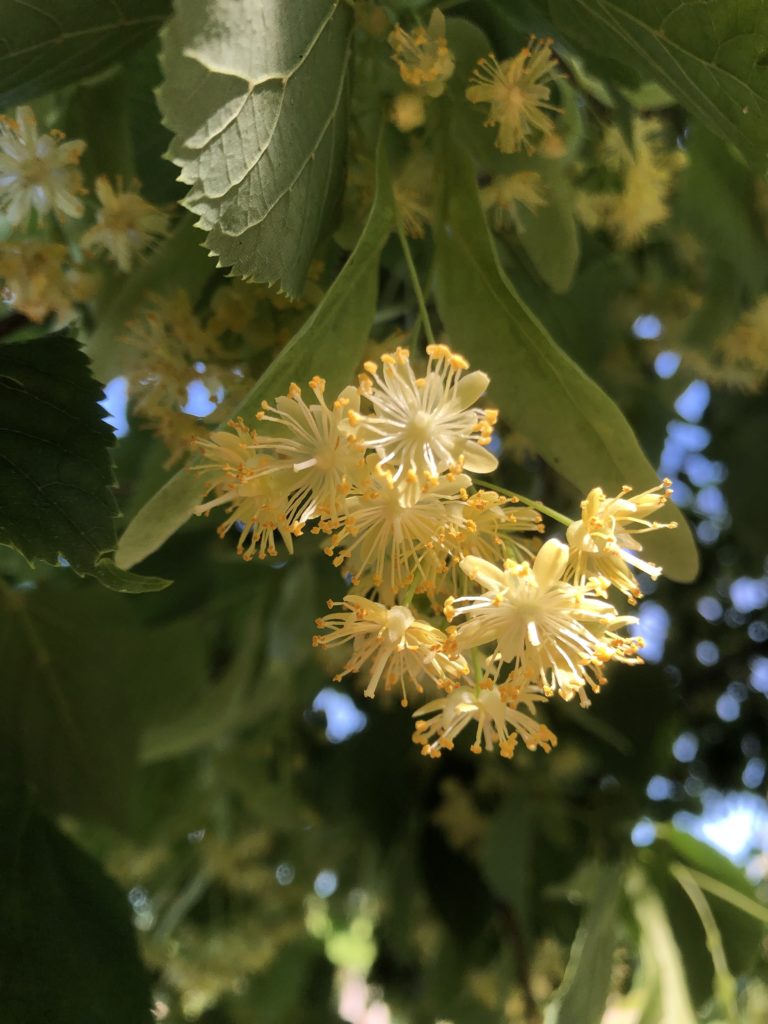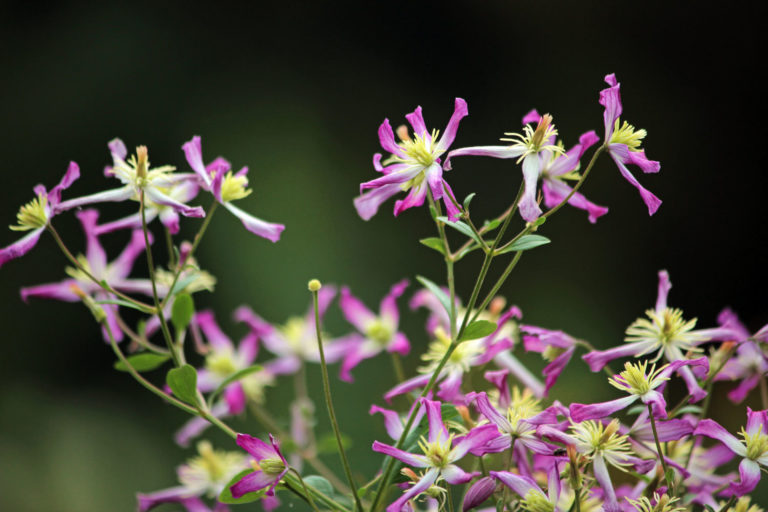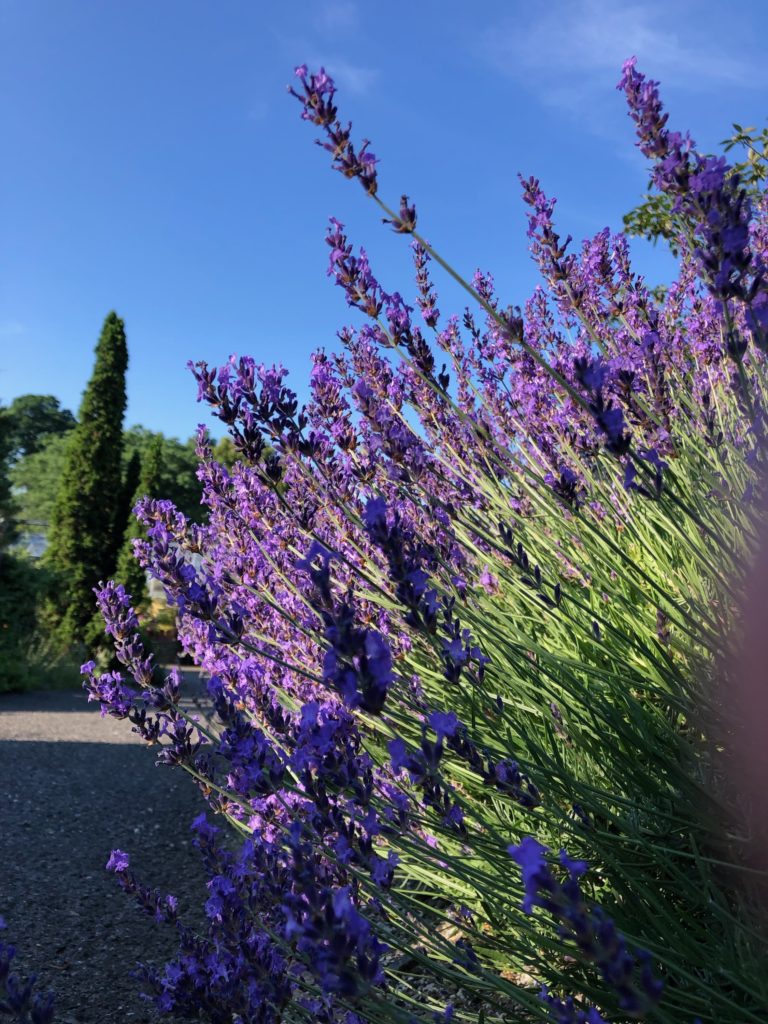
The Lavender Border
June 25, 2020A seemingly modest, tidy strip running alongside the pathway up past the Alpine House, Wave Hill’s Lavender Border is a fragrant surprise in late June. Two dozen kinds—including several species and many hybrids—form a low-mounding stretch of soft, silvery-gray greens topped with spikes of color. And how bright that color can be!
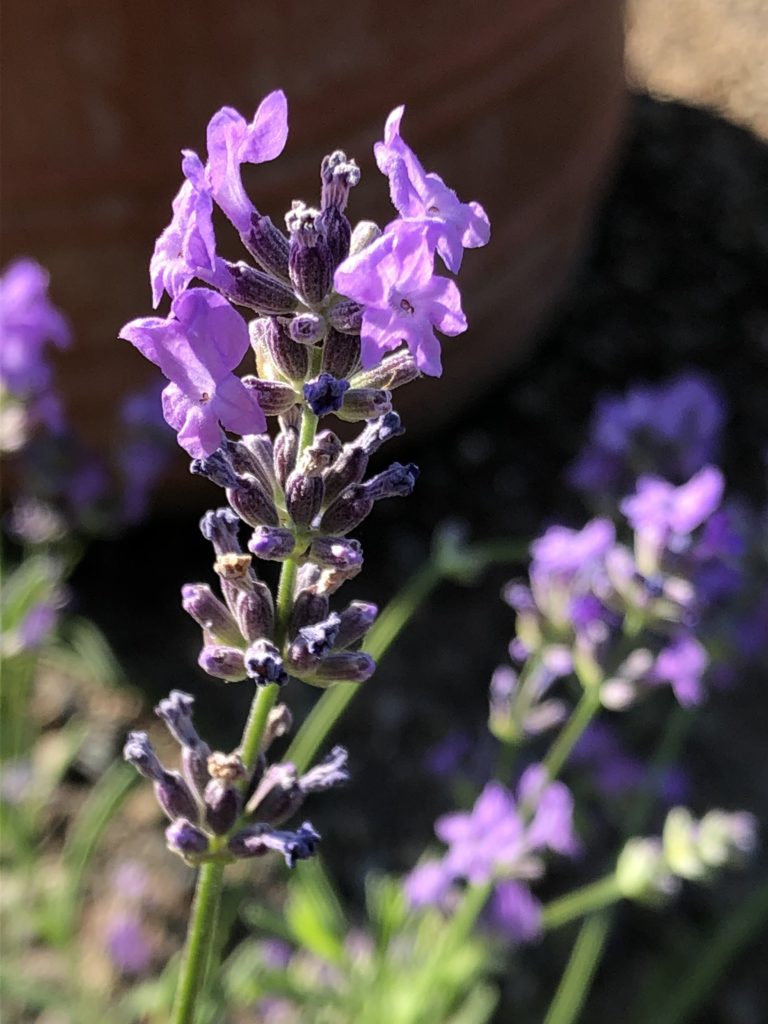
Though it looks comfortably settled in, this border is a relative newcomer to the garden, dating back only about a dozen years. It came into being once construction of the Perkins Visitor Center complex was complete in 2004. Just above the new building, which includes a work and storage area for our team of horticulturists, a fence was added for safety purposes. And between that fence and the Alpine House and Terrace beyond lies our border.
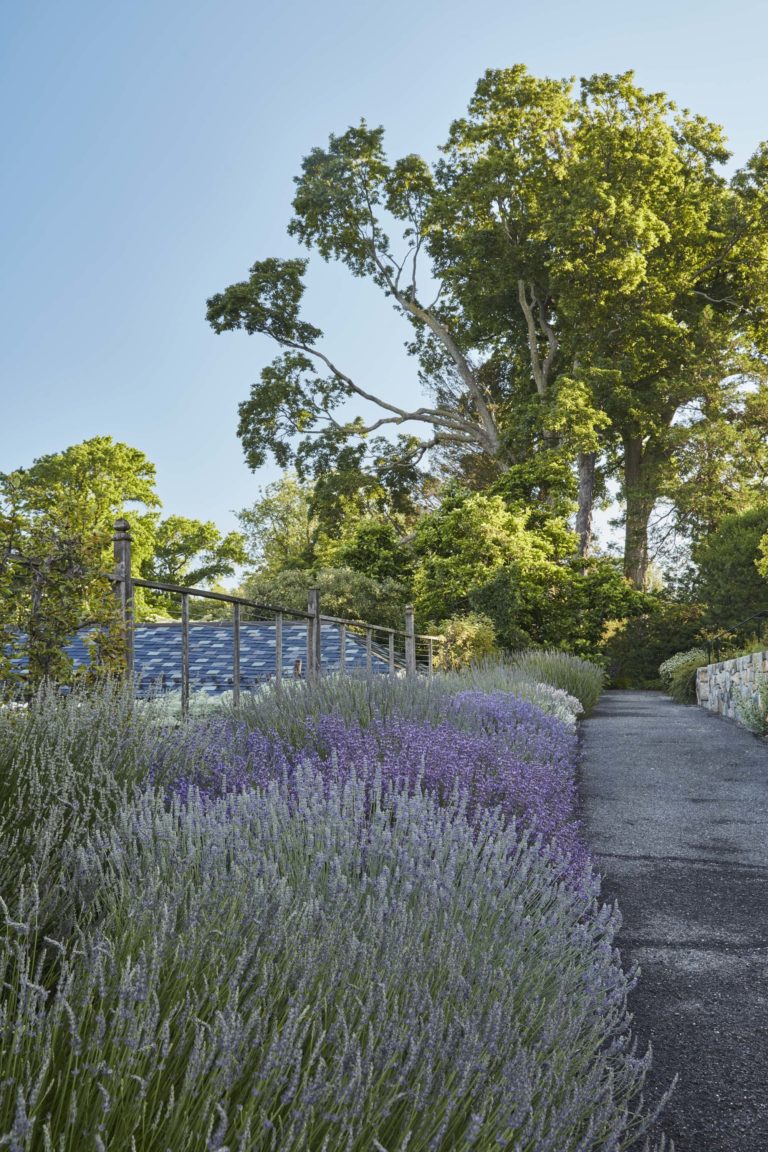
Wave Hill’s second Director of Horticulture, Scott Canning, had a vision for that border—a lovely, romantic vision, thinks current Senior Director of Horticulture Louis Bauer—that would use espaliered pears and roses to take advantage of a sunny spot. After two unsuccessful experiments, first with the roses and then with the pears, the third try, this time featuring lavender, was found to suit the droughty location, with its poor soil and lots of reflected light. Happily Canning persisted, demonstrating once again that failure sometimes leads to creative, unanticipated solutions.
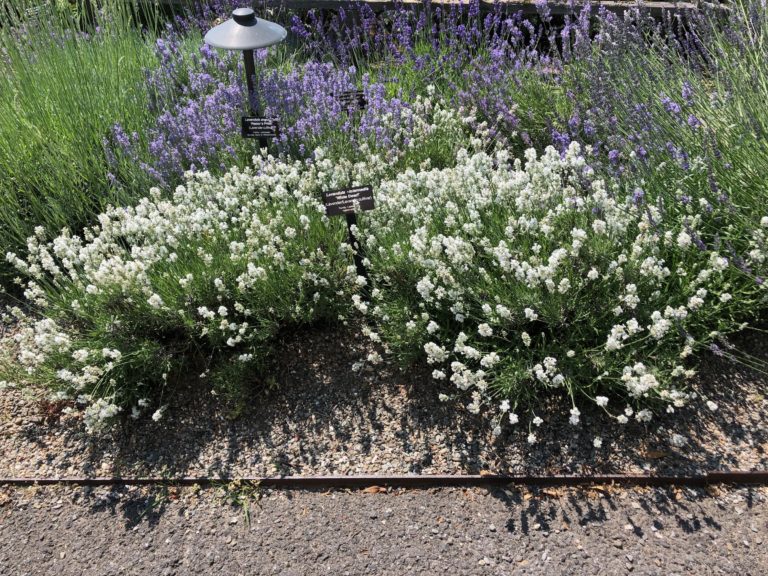
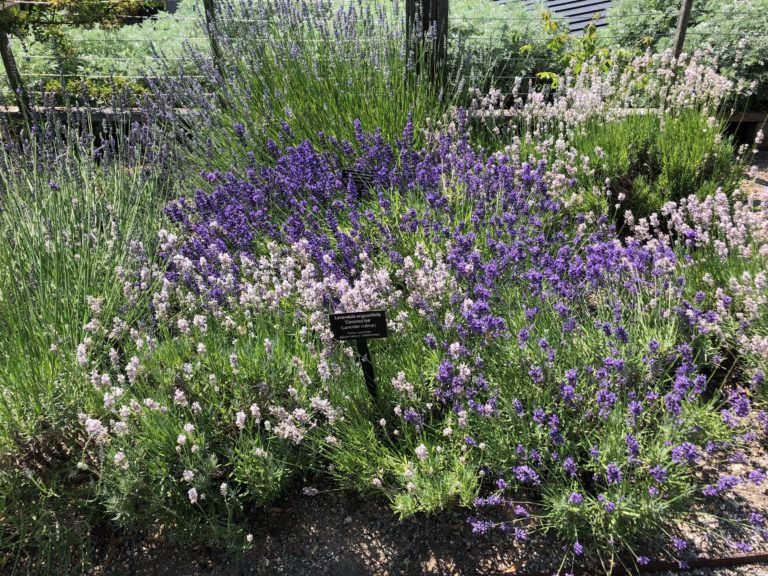
Across the path from the Lavender Border, don’t miss more lavender plants in the Dry Garden. They don’t match the abundance of the border, though. Here the focus is on a somewhat taller type called, not surprisingly, Lavandula x intermedia ‘Grosso’.
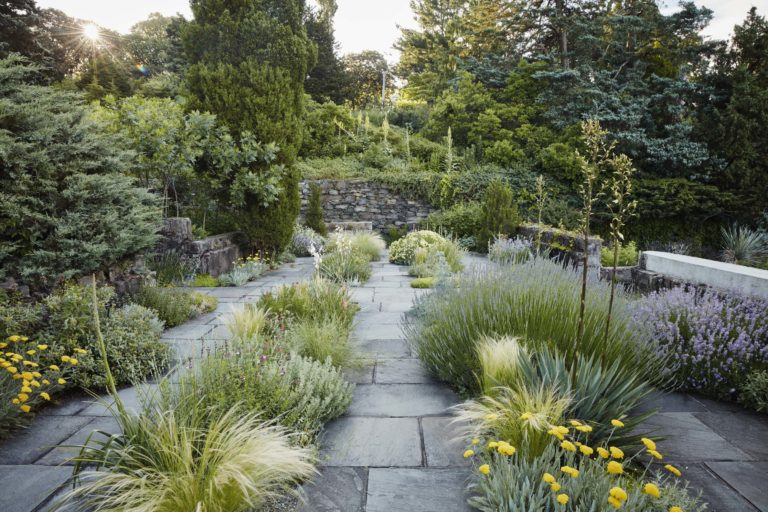
In fact, the Lavender Border is a fine example of what writer Tom Christopher describes in Nature into Art: The Gardens of Wave Hill (Timber Press, 2019) as “an abundance of microclimates” in the gardens. The reflected heat and light from the Perkins Visitor Center and the horticulture courtyard behind it have helped to create conditions that marvelously suit our lavender. They tend to age out more quickly than plants growing in their Mediterranean homeland, but lasting an average of ten years, Bauer points out, is pretty remarkable. Today, the two dozen varieties of lavender blooming along the border are backed by golden-fruited Pyracantha–for fall interest—and Rosa ‘Madame Alfred Carriere,’ a vigorous climber. Wave Hill abounds in climbers, by the way. But that is a subject for a post later this summer.
Originating on the borders of the Mediterranean, the genus Lavandula is a member of the mint family (Lamiaceae), with about 30 species. You may know it as an essential oil used to scent your hand cream or bath oil or an old-fashioned sachet for a bureau drawer. At Wave Hill, it has more than once been the focus of a summer day in the gardens, with a lavender-themed Family Art Project, a cold-pressed soap-making project and a cooking demonstration. (Want the recipe for peach and feta salad with lavender dressing?) By late summer, the bloom colors fade and the gardeners harvest the flower spikes, some making their way to workshops and some to The Shop.
In the meantime, we can be thankful for the great number of cultivars along the Lavender Border. They give us not only many forms and colors—purple, white and even some pink blossoms—but a variation in bloom times that extends the peak season, giving us fragrance and a pleasingly soft palette of hues for weeks as summer sets in.
